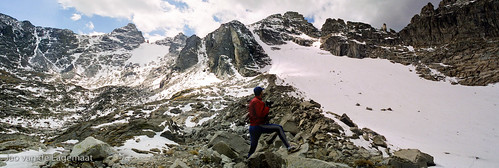Lightroom 2.0 was released yesterday and I immediately downloaded the upgrade even though I have been very very busy with other things. Let me say that I am quite astonished by the release even though I knew what was to be expected in this. Just a list of things I was hoping for and whether they are in LR 2:
- electronic grad ND filters: One of the few reasons I have to go to Photoshop stil and a very longheld wish of mine.
check- Paint-in adjustment masks for exposure, sharpening, saturation, etc.
check- export to arbitrary color profiles in the export dialog:
check- pervasive output sharpening:
check And it is superb!
- Better color rendering for reds, yellows, and oranges:
check if you use the
beta camera profiles. More on this later and why this is so exciting.
- Print to jpeg:
check! It now even copies over the copyright notice into the metadata!
- Better file organization:
checkStuff that didn't make the cut but that I'd really love to see:
- Soft proofing. Obviously this is a major wish. This is hard to get right though.
- Book making facility. This is one area where Aperture really shines.
- Built-in backup facility.
About the new DNG profiles. I think this is a major advance that cannot be underestimated in its importance. Lightroom and ACR always had this issue where you could not get both skin tones and reds and yellows right at the same time without resorting to tricks. These new profiles provide beautiful colors and provide color rendering (if you like that) very close to the camera jpeg.
Here is an example: Young photographer loves colorful flowers:
This is the ACR 4.4 default rendering:

This is what people complain about. Ugly skintones, dull yellows and reds, etc. In this case, the image appears underexposed too, which it really wasn't
Compare this to the default Capture NX rendering (same as the camera jpeg)

As you can see, far better skin tones and more accurate yellow.
This is the rendering with the camera default beta profile:

That is superb. Great skintones and beautiful yellow. The yellow is actually nicer than in the CNX image.
Now to really optimize this, I used the camera vivid profile and increased the vibrance and saturation to 10 to get this image:

This really exemplifies the almost fluorescent quality these flowers had in real life. It also gives the nice warm tones that were present in the sunset light, even when using the daylight white balance! The difference with the ACR4.4 rendering is stunning. I'd recommend anybody to download the new profiles and try them out! I have to stress here that apart from slightly nicer reds and yellows, it makes very little difference for my D300. The difference with my older D50 (images above) are very large as you can clearly see.


















